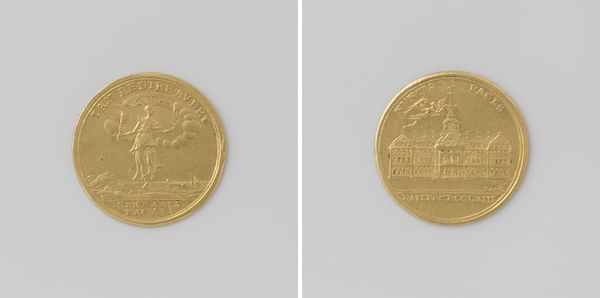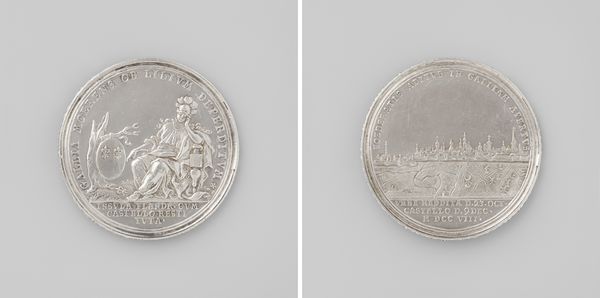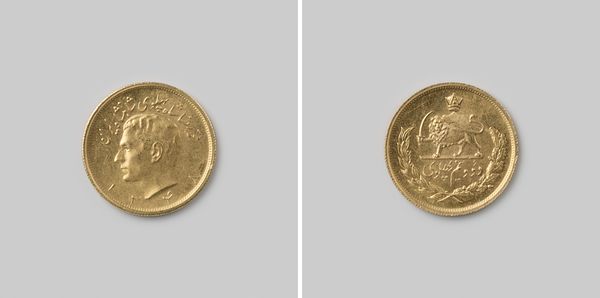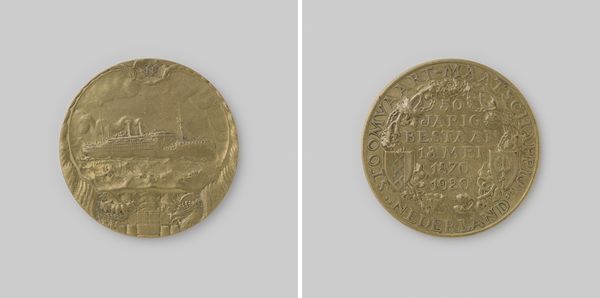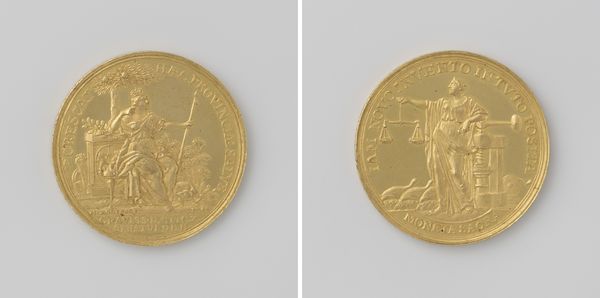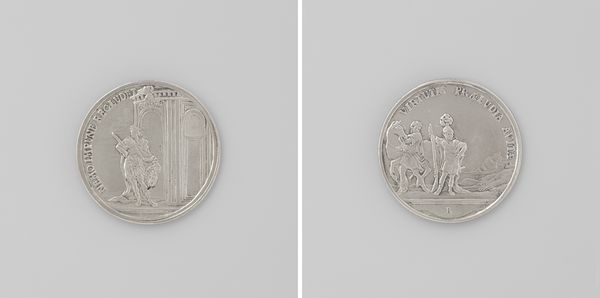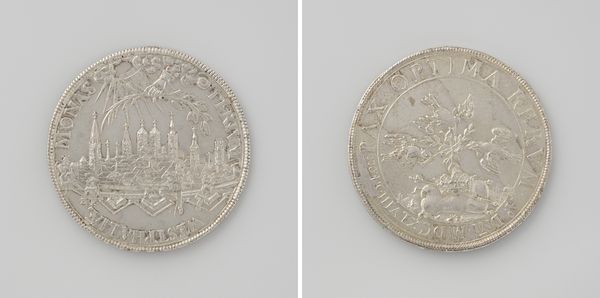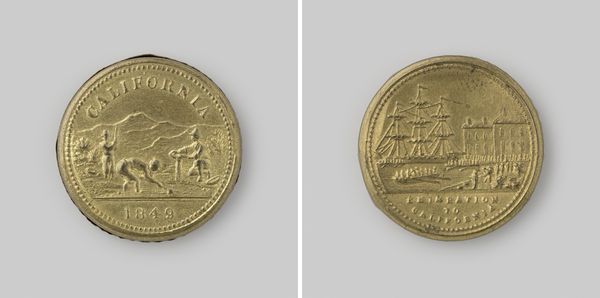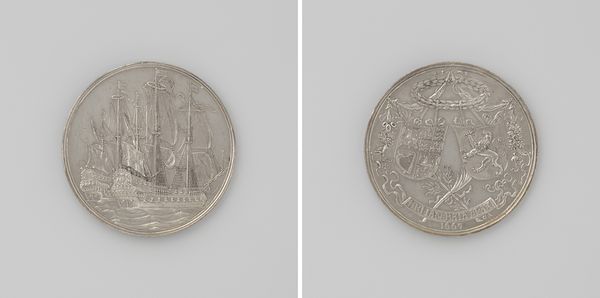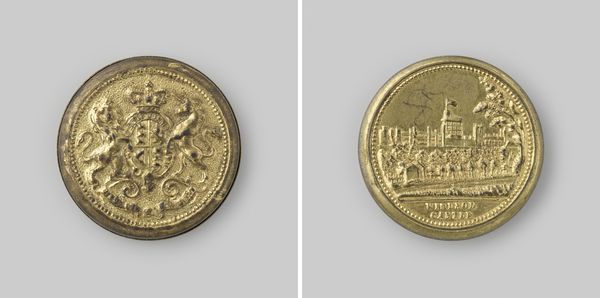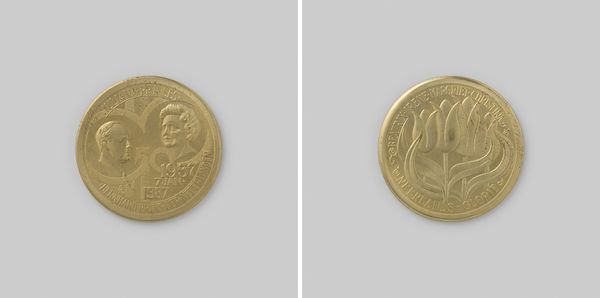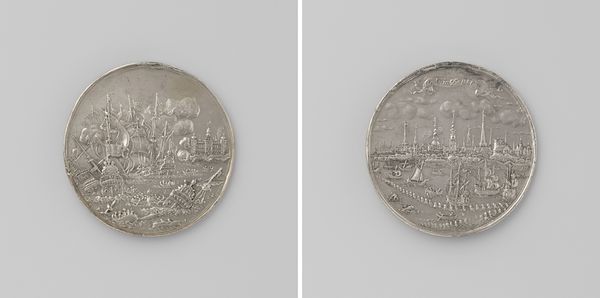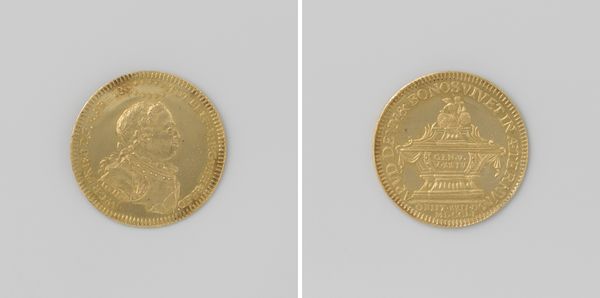
metal, relief, sculpture
#
portrait
#
dutch-golden-age
#
metal
#
relief
#
geometric
#
sculpture
#
cityscape
#
decorative-art
Dimensions: diameter 3.8 cm, weight 21.85 gr
Copyright: Rijks Museum: Open Domain
Curator: Here we have "Restauratie van de Westerkerk te Amsterdam," a metal relief created in 1987 by Willem Vis. Editor: My first impression is how incredibly detailed this small-scale cityscape is. It seems almost jewel-like in its precision. There’s something commemorative about it, a sense of civic pride rendered in miniature. Curator: Absolutely. It serves as a tangible symbol of cultural preservation. Vis is known for imbuing his pieces with deep local and historical significance. This piece, in particular, speaks to Amsterdam’s commitment to maintaining its architectural heritage. The Westerkerk, with its iconic tower, acts as a strong symbol of the city's identity. Editor: I am immediately drawn to that image of the Westerkerk; I recognize its significance beyond architectural form, and how the tower asserts both a municipal and religious presence. The building's outline suggests permanence and power dynamics rooted in the Protestant ethic of Amsterdam, connecting civic life to something ‘higher’. Curator: Exactly, and that is where symbolism meets practical history. The artwork references both the spiritual and municipal power structures embedded in Dutch history, visible in Amsterdam to this day. One side shows a rendering of the city’s coat of arms, which, although updated from its 13th-century iteration, is clearly an attempt to represent that power in an enduring format, just as Willem Vis has here. Editor: And knowing that the piece was crafted during the actual restoration, I can only read into the artwork the collective determination of a society working together. It's interesting that the work is undated. Can we talk about that? How can undated pieces be read outside of the artists intention? I feel as though its importance could get missed. Curator: In undated pieces the cultural significance persists independent of our original timeline. It presents challenges in the absence of definitive historical markers. Editor: Ultimately, these small civic commemorations play a pivotal role in the narrative of preservation, as well as community and city identity. Curator: Yes, it reminds us that even small-scale art objects can hold tremendous symbolic weight, embodying layers of history, collective memory, and civic identity.
Comments
No comments
Be the first to comment and join the conversation on the ultimate creative platform.
